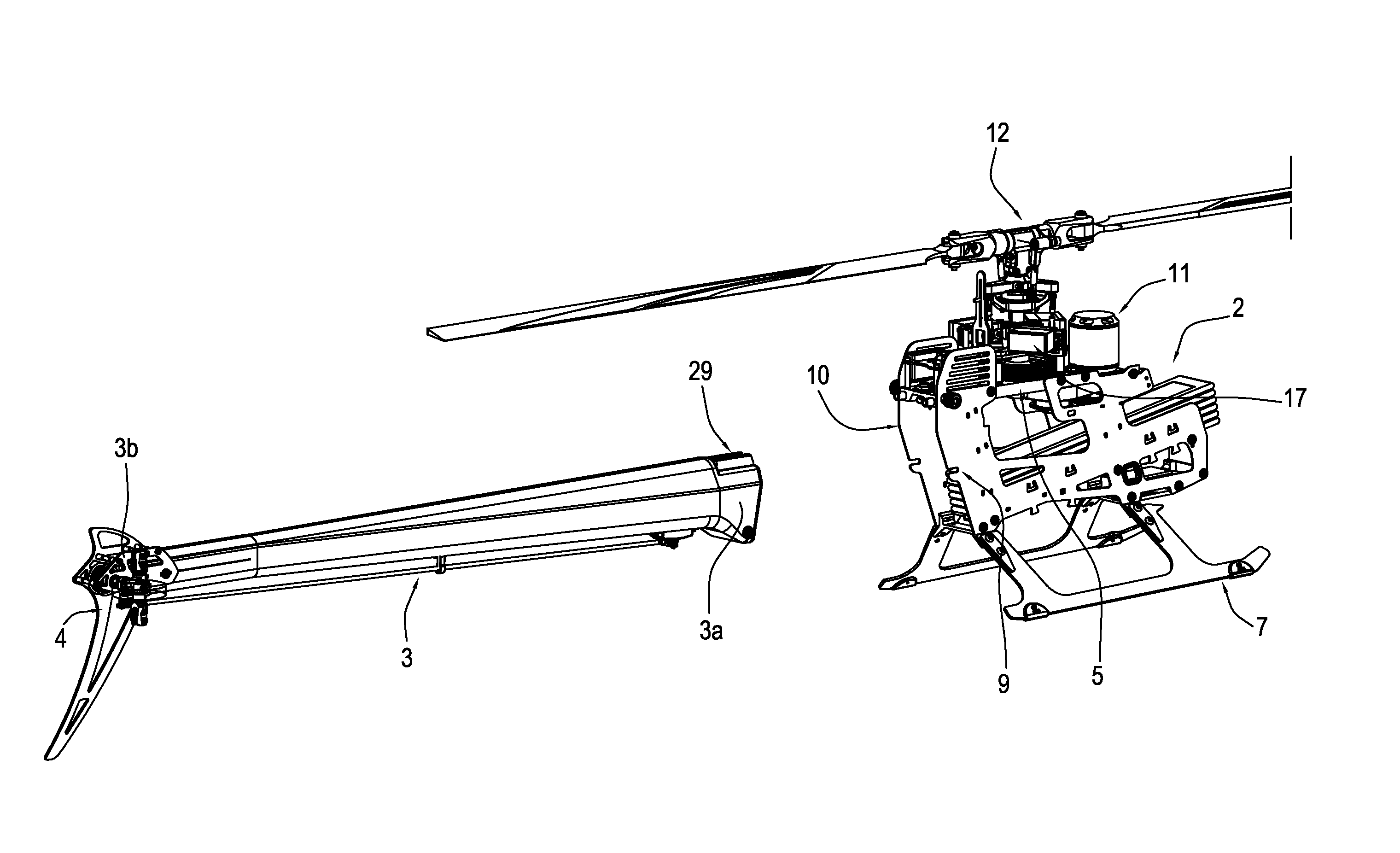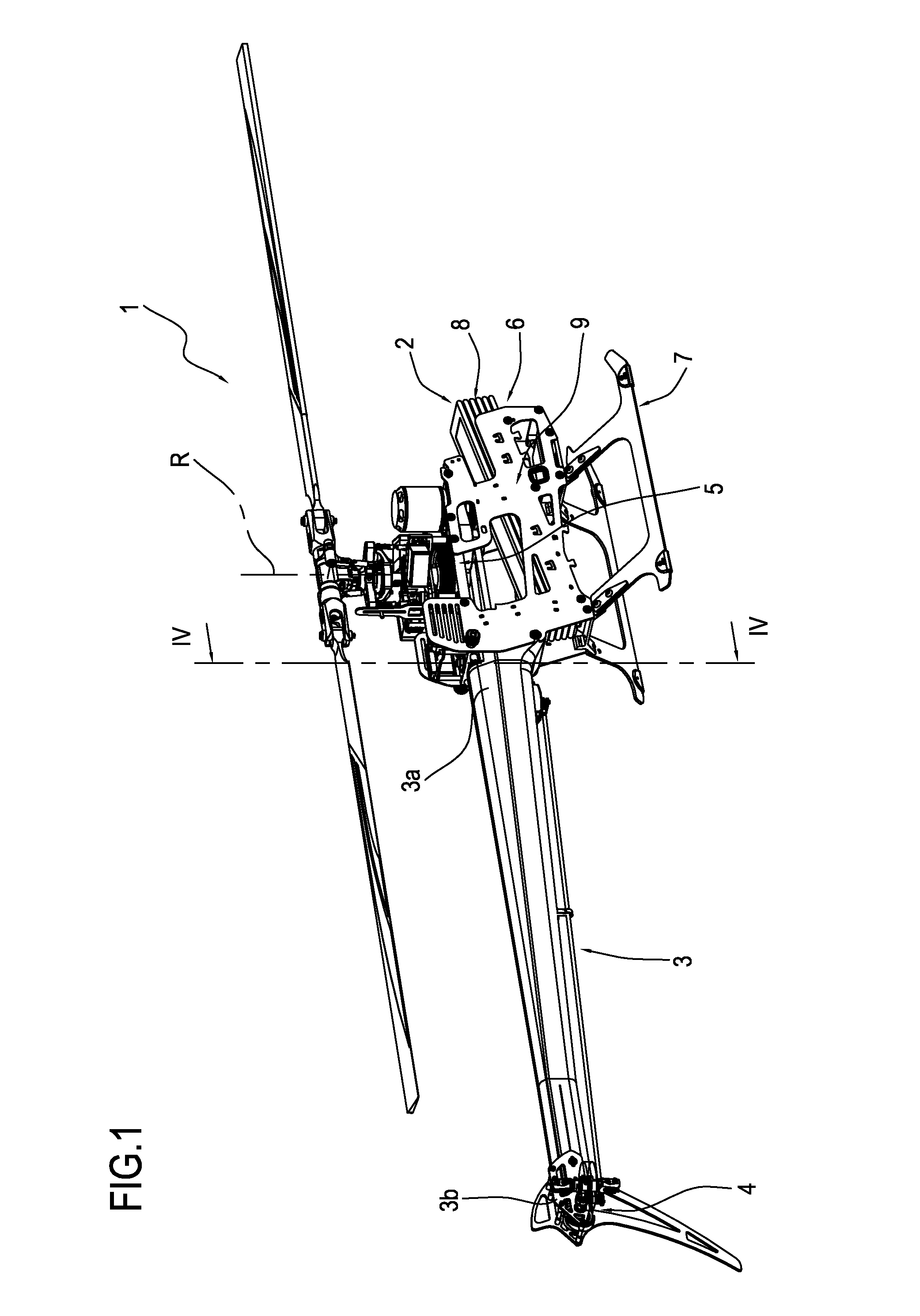Radio-controlled helicopter
a radio-controlled helicopter and helicopter technology, applied in the field of radio-controlled helicopters, can solve the problems of reducing the weight of the helicopter, affecting the operation of the tail beam, and the structure of the above-mentioned helicopter in its entirety, so as to reduce the cantilever mass as much as possible, and minimise the damage resulting from the crash
- Summary
- Abstract
- Description
- Claims
- Application Information
AI Technical Summary
Benefits of technology
Problems solved by technology
Method used
Image
Examples
Embodiment Construction
[0029]With reference to the accompanying drawings, with particular reference to the FIGS. 1 to 5, the numeral 1 denotes a radio-controlled helicopter according to this invention.
[0030]The helicopter 1 is described below solely for he parts necessary or the understanding of this invention.
[0031]The helicopter 1 comprises a main body 2 and a tail beam 3 connected to and supported by the main body 2.
[0032]The beam 3 can be removed from the main body 2, as described in more detail below.
[0033]More specifically, the beam 3 has a first end 3a connected, so close, to the main body 2 and a second end 3b, away from the main body 2.
[0034]The tail beam 3 is made from composite materials of a substantially know type and, advantageously, has a tapered tubular profile with the cross-section at the first end 3a greater than the cross-section at the second end 3b.
[0035]The tail beam 3 is, in other words, defined by a tapered tubular member with the cross-section at the first end 3a greater than th...
PUM
 Login to View More
Login to View More Abstract
Description
Claims
Application Information
 Login to View More
Login to View More - R&D
- Intellectual Property
- Life Sciences
- Materials
- Tech Scout
- Unparalleled Data Quality
- Higher Quality Content
- 60% Fewer Hallucinations
Browse by: Latest US Patents, China's latest patents, Technical Efficacy Thesaurus, Application Domain, Technology Topic, Popular Technical Reports.
© 2025 PatSnap. All rights reserved.Legal|Privacy policy|Modern Slavery Act Transparency Statement|Sitemap|About US| Contact US: help@patsnap.com



